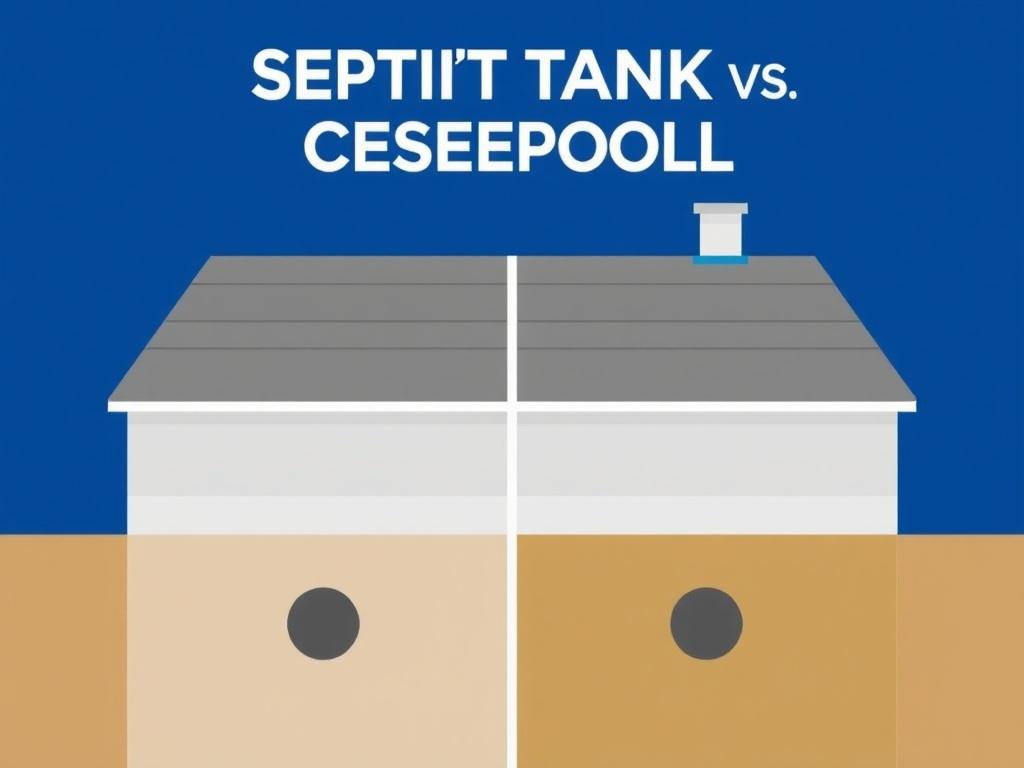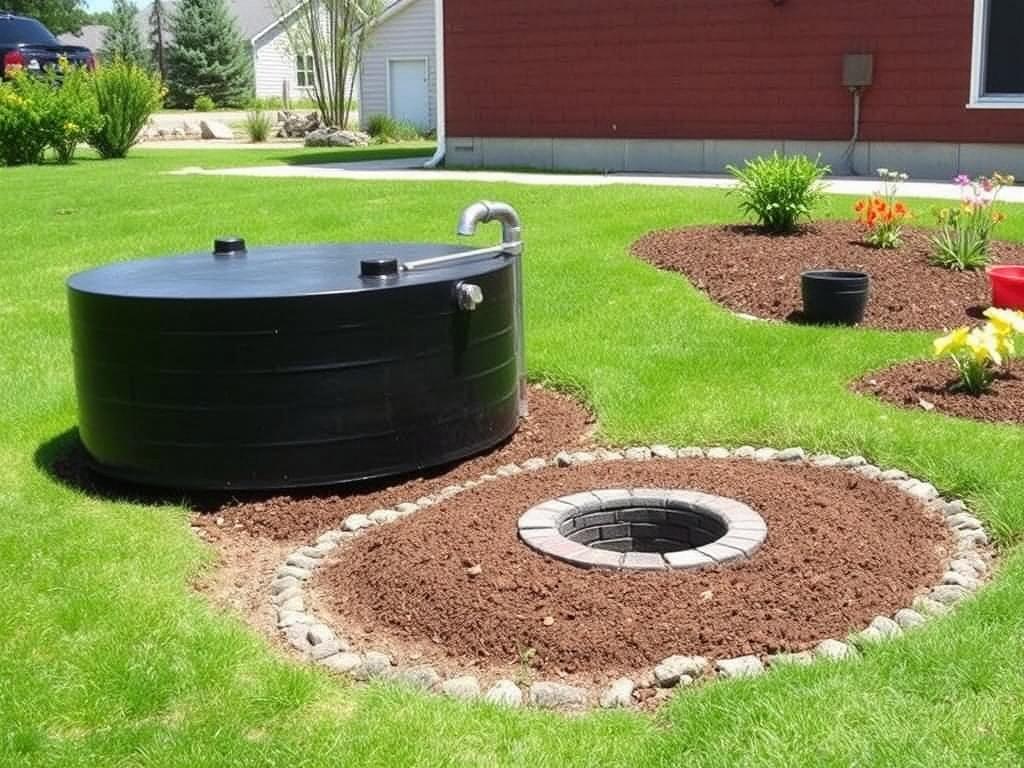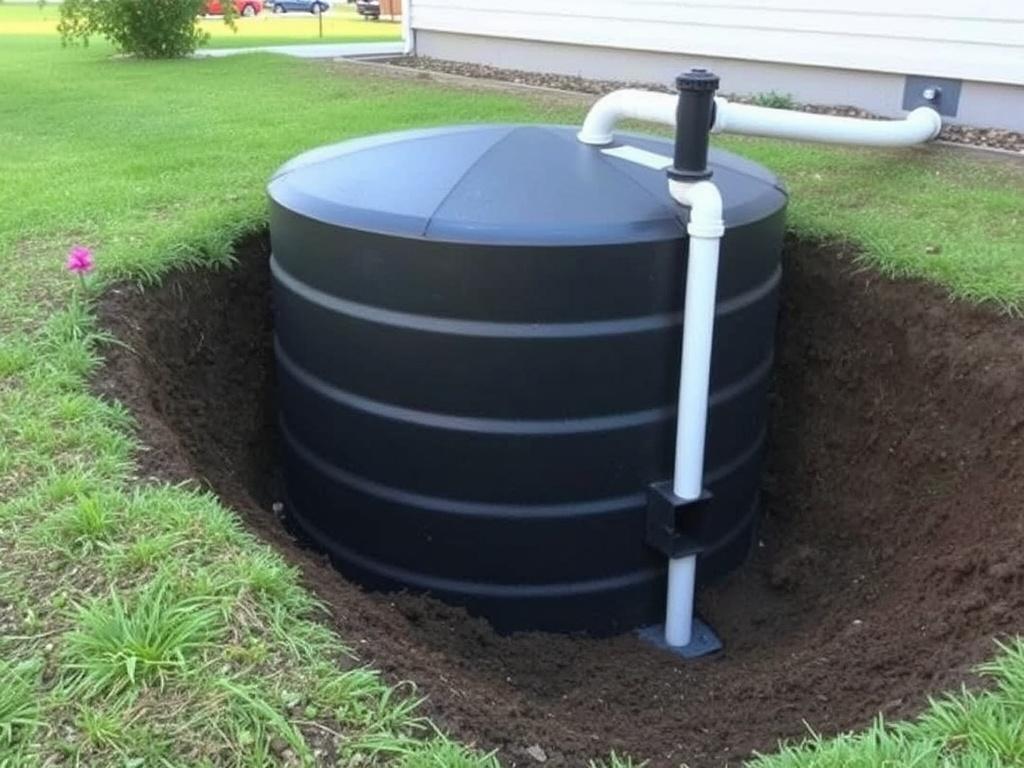When it comes to managing household wastewater in areas without access to municipal sewer systems, two of the most common solutions are septic tanks and cesspools. Both systems handle sewage and wastewater on-site, but they operate quite differently and have distinct advantages, drawbacks, and maintenance requirements. If you’re trying to decide between a septic tank vs. cesspool, understanding their key differences will help you make an informed choice that suits your property, budget, and environmental considerations.
In this article, we will explore exactly how septic tanks and cesspools work, their construction, environmental impact, costs, maintenance needs, and effectiveness in treating wastewater. We’ll cover these aspects step by step so by the end, you’ll be clear on which system is the better fit for your home or property. Let’s dive right in and clear up the confusion that often surrounds these two wastewater treatment options.
- What Is a Septic Tank?
- Understanding Cesspools
- Septic Tank vs. Cesspool: How Do They Work?
- Septic Tank Operations
- Cesspool Operations
- Key Differences Between Septic Tanks and Cesspools
- Why Choose a Septic Tank Over a Cesspool?
- Situations Where Cesspools Might Still Be Used
- Installation and Maintenance: What to Expect
- Installing a Septic Tank
- Installing and Maintaining a Cesspool
- Costs Involved: Septic Tank vs. Cesspool
- Environmental Considerations
- Common Myths About Septic Tanks and Cesspools
- Tips for Maintaining a Septic Tank
- When to Upgrade From a Cesspool to a Septic Tank
- Summary of Benefits: Septic Tank vs. Cesspool
- Conclusion
What Is a Septic Tank?
A septic tank is an underground, watertight container made typically from concrete, fiberglass, or polyethylene. It’s designed to hold sewage from your household plumbing long enough to allow solids to settle to the bottom and oils and grease to float to the top. Bacteria in the tank begin breaking down the solid waste, reducing its volume. The relatively clear liquid effluent then flows from the tank into a drainfield or leach field where further natural filtration and absorption into the soil occur.
Septic tanks are a popular choice in rural and suburban areas without centralized sewer systems. They protect groundwater and public waterways by treating wastewater onsite, making them an environmentally responsible option when designed, installed, and maintained properly.
Some key features of septic tanks include:
- Watertight container that prevents leakage of untreated sewage
- Allows partial treatment of sewage by settling and biological digestion
- Sends clarified effluent to a drainage system for soil absorption
- Requires regular pumping and maintenance
Understanding Cesspools

Cesspools, sometimes called cesspits, are more primitive wastewater disposal systems compared to septic tanks. Essentially, a cesspool is a deep, underground pit that receives untreated sewage directly from the house. The pit is usually lined with bricks, stones, or concrete rings with holes or cracks that allow liquids to seep out and seep into the surrounding soil. Unlike septic tanks, cesspools do not have a method for separating solids from liquids or treating the sewage before it infiltrates the soil.
While cesspools have been widely used in the past, especially in older homes and rural regions, they are less favored today due to their environmental risks. Because they allow raw sewage to enter the ground, cesspools can contaminate groundwater, wells, or nearby water bodies, potentially causing health hazards.
Key characteristics of cesspools include:
- Simple pit without separation or treatment components
- Sewage directly enters the pit and seeps into the soil untreated
- Lower initial installation cost compared to septic tanks
- Higher risk of environmental contamination
- Often require replacement or upgrades per modern regulations
Septic Tank vs. Cesspool: How Do They Work?
Understanding the operational differences between septic tanks and cesspools clarifies why they are often treated very differently by local health departments and environmental agencies.
Septic Tank Operations
A septic tank’s operation involves multiple stages:
1. Wastewater from your home enters the tank.
2. Solids settle to the bottom, forming sludge.
3. Fats, oils, and grease float to the surface, creating a scum layer.
4. Bacteria within the tank break down solids anaerobically (without oxygen).
5. The clearer effluent flows out of the tank into the drainfield.
6. The drainfield allows the effluent to percolate through soil, where microbes further treat the water.
This biological treatment reduces pathogens and pollutants, making septic tanks a relatively safe and eco-friendly system when functioning correctly.
Cesspool Operations
Cesspools operate primarily by allowing liquids to drain through the pit walls into the surrounding soil. Unlike septic tanks, cesspools don’t separate or treat solids effectively. Solids accumulate in the pit, requiring occasional emptying or replacement. Unfortunately, untreated sewage can sometimes bypass soil absorption if the soil or groundwater conditions are poor, leading to contamination.
In summary, septic tanks act as a first stage of treatment, while cesspools merely provide a holding area where wastewater seeps into the earth without any significant treatment.
Key Differences Between Septic Tanks and Cesspools

Let’s break down the main differences clearly in the following table:
| Feature | Septic Tank | Cesspool |
|---|---|---|
| Design | Watertight tank with inlet and outlet baffles | Open pit, often porous or with holes for seepage |
| Treatment | Partial treatment inside tank, followed by soil absorption | No treatment; raw sewage enters soil directly |
| Environmental Impact | Lower risk of groundwater contamination when properly maintained | Higher risk of pollution and disease spread |
| Maintenance | Requires routine pumping (every 3-5 years) | Needs periodic emptying or replacement; often less frequent oversight |
| Cost | Higher initial cost but better long-term investment | Lower installation cost but possible higher environmental remediation costs |
| Lifespan | Can last several decades with proper care | Often shorter, may fail and require replacement |
| Regulatory Approval | Generally preferred or required under modern building codes | Often banned or heavily restricted in many regions |
Why Choose a Septic Tank Over a Cesspool?

Given the differences above, many homeowners and municipalities now recommend septic tanks as the safer and more sustainable choice. Here are some reasons why:
- Environmental Protection: Septic tanks significantly reduce the risk of raw sewage contaminating groundwater, which is essential for safe drinking water and healthy ecosystems.
- Better Treatment: Septic tanks rely on biological digestion to break down solids, reducing sludge and effluent pollutants.
- Long-Term Cost Savings: Despite higher upfront costs, septic tanks often require less frequent costly replacements or environmental cleanups.
- Legal Compliance: Many local health codes now prohibit new cesspool installations because of public health risks.
Situations Where Cesspools Might Still Be Used
Although cesspools are largely outdated, they can still be found in some older properties or areas with poor soil percolation where designing a traditional septic tank system is difficult. That said, if you have an existing cesspool, local regulations might require you to upgrade it to a septic tank or other wastewater treatment system during major renovations or when property ownership changes.
Installation and Maintenance: What to Expect
Installing a Septic Tank
Installing a septic tank involves several important steps:
- Site Evaluation: A soil test (perc test) is conducted to determine soil permeability and drainage suitability for the drainfield.
- System Design: The size of the septic tank and drainfield is determined based on household size, water usage, and soil conditions.
- Permitting: Local health departments issue permits and inspect the installation to ensure regulatory compliance.
- Excavation and Installation: The tank is buried in a watertight manner with proper connections to the home’s plumbing.
- Drainfield Construction: Trenches or beds filled with gravel or special materials allow effluent absorption.
Installing and Maintaining a Cesspool
Cesspools require a simpler installation — typically digging and lining a pit. However, because cesspools allow untreated sewage to seep into the soil, they pose environmental risks that often mean they aren’t permitted in many areas today.
Both systems require maintenance, but cesspools are difficult to maintain properly because solids accumulate rapidly, and the pit can fail or fill up, causing sewage backups and contamination. Septic tanks, on the other hand, require regular pumping to remove sludge and inspection to detect signs of failure.
Costs Involved: Septic Tank vs. Cesspool
When budgeting for wastewater management, it’s important to factor in installation, maintenance, and potential repair costs.
| Cost Aspect | Septic Tank | Cesspool |
|---|---|---|
| Initial Installation | $3,000 – $7,000 (typical range) | $1,000 – $3,500 |
| Regular Maintenance | $200 – $400 for pumping every 3-5 years | Occasional emptying, costs vary widely |
| Potential Remediation | Rare if properly maintained | Can be costly if groundwater contamination occurs |
| Lifespan | 20-40 years or more | Often less than 20 years |
While cesspools may seem cheaper initially, their environmental risks and potential regulatory liabilities often make septic tanks the wiser long-term investment.
Environmental Considerations
Protecting our water resources and environment is essential when dealing with wastewater disposal. Here’s how septic tanks and cesspools measure up:
- Septic Tanks: Designed to reduce pathogens and organic matter before effluent reaches groundwater, septic systems help maintain water quality and protect human health.
- Cesspools: Since they allow raw sewage to enter soil, cesspools increase the risk of pollution, which can harm aquatic life and pose health hazards, especially near wells or water bodies.
Many jurisdictions now ban new cesspools to lower the risk of water contamination and encourage installation of septic tanks or more advanced treatment systems.
Common Myths About Septic Tanks and Cesspools
There are many misconceptions about both wastewater systems. Let’s clear up a few:
- Myth: Septic tanks require little or no maintenance.
Truth: Septic tanks need regular pumping and inspection to function safely. - Myth: Cesspools and septic tanks work the same way.
Truth: Cesspools don’t treat wastewater, septic tanks provide partial treatment. - Myth: Cesspools are cheaper over time.
Truth: Potential health and environmental costs often make cesspools more expensive in the long run.
Tips for Maintaining a Septic Tank
Proper care of your septic tank protects your home and the environment:
- Have your septic tank inspected and pumped regularly by professionals.
- Be mindful about what goes down your drains—avoid harsh chemicals and non-biodegradable items.
- Limit usage of garbage disposals to reduce solids entering the tank.
- Protect your drainfield from heavy vehicles and excessive water runoff.
When to Upgrade From a Cesspool to a Septic Tank
If your property currently uses a cesspool, consider upgrading if:
- You’re buying or selling the home, and local regulations require modern systems.
- There are signs of sewage backups or seepage on your property.
- Your property is near wells, lakes, or other sensitive environmental areas.
- You plan to renovate or expand your home’s plumbing.
Upgrading improves safety, complies with regulations, and can boost property value.
Summary of Benefits: Septic Tank vs. Cesspool
| Aspect | Septic Tank | Cesspool |
|---|---|---|
| Environmental Safety | High, with proper maintenance | Low – risk of contamination |
| Treatment Efficiency | Moderate – partial treatment | None – untreated sewage |
| Maintenance Frequency | Every 3-5 years | Less frequent but less reliable |
| Installation Cost | Higher | Lower |
| Regulatory Status | Widely approved | Usually disapproved or phased out |
Conclusion
Choosing between a septic tank vs. cesspool is more than just a matter of cost or convenience—it’s a decision that involves environmental health, legal considerations, and long-term property value. Septic tanks, with their ability to partially treat wastewater before releasing it into the soil, represent a safer, more sustainable option and are the system of choice in most communities today. Cesspools, though once common due to their lower installation costs, pose significant risks of groundwater contamination and are increasingly prohibited by health departments. Whether building a new home, upgrading an existing system, or simply educating yourself on wastewater solutions, understanding the key differences and benefits of septic tanks over cesspools is essential. With proper installation and maintenance, a septic tank can provide decades of reliable service while protecting the environment and your family’s health.
Помогла вам статья?






